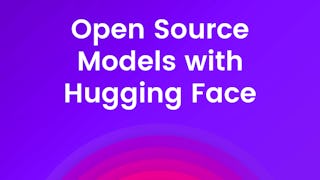- Browse
- Applied Statistics
Results for "applied statistics"

Skills you'll gain: Data Visualization, Business Analytics, Dashboard, Data Analysis, Data Storytelling, Google Analytics, Marketing Analytics, Data-Driven Decision-Making, Business Metrics, Data Integration, Google Ads
4.5·Rating, 4.5 out of 5 stars115 reviewsIntermediate · Guided Project · Less Than 2 Hours
 Status: Free TrialFree TrialD
Status: Free TrialFree TrialDDartmouth College
Skills you'll gain: Demography, Environment, Environmental Science, Environmental Issue, Nutrition and Diet, Sustainable Development, Natural Resource Management, Sustainability Standards, Cultural Diversity, Trend Analysis
4.8·Rating, 4.8 out of 5 stars54 reviewsBeginner · Course · 1 - 4 Weeks
 Status: PreviewPreviewÉ
Status: PreviewPreviewÉÉcole Polytechnique Fédérale de Lausanne
Skills you'll gain: Traffic Flow Optimization, Land Development, Spatial Analysis, Civil Engineering, Systems Thinking, Sociology, Socioeconomics, Social Sciences, Sustainable Development, Public Policies
4.6·Rating, 4.6 out of 5 stars120 reviewsMixed · Course · 1 - 3 Months
 Status: PreviewPreviewS
Status: PreviewPreviewSSimplilearn
Skills you'll gain: Email Marketing, Performance marketing, Marketing Channel, Content Marketing, Social Media, Web Analytics, Blogs, Marketing Analytics
3.9·Rating, 3.9 out of 5 stars13 reviewsBeginner · Course · 1 - 4 Weeks
 Status: FreeFreeD
Status: FreeFreeDDeepLearning.AI
Skills you'll gain: Hugging Face, LLM Application, Generative AI, Model Deployment, Cloud Deployment, Natural Language Processing, Large Language Modeling, Applied Machine Learning, User Interface (UI), API Design, Computer Vision
4.7·Rating, 4.7 out of 5 stars73 reviewsBeginner · Project · Less Than 2 Hours
 Status: Free TrialFree TrialG
Status: Free TrialFree TrialGGoogle Cloud
Skills you'll gain: Feature Engineering, Data Preprocessing, Dataflow, Tensorflow, Applied Machine Learning, Data Transformation, Keras (Neural Network Library), Data Pipelines, Data Modeling, Machine Learning, Python Programming, Statistical Methods
4.4·Rating, 4.4 out of 5 stars37 reviewsIntermediate · Course · 1 - 3 Months
 Status: Free TrialFree TrialL
Status: Free TrialFree TrialLLearnQuest
Skills you'll gain: Network Architecture, Network Protocols, Wireless Networks, Network Performance Management, Network Planning And Design, Network Infrastructure, Communication Systems, Telecommunications, Emerging Technologies
4.7·Rating, 4.7 out of 5 stars21 reviewsIntermediate · Course · 1 - 4 Weeks
 Status: PreviewPreviewN
Status: PreviewPreviewNNanyang Technological University, Singapore
Skills you'll gain: Geometry, Design Elements And Principles, 3D Modeling, Materials science, Chemistry, Art History, Architectural Design, Physical Science, Pharmaceuticals, Applied Mathematics, Ancient History, Biology
3.7·Rating, 3.7 out of 5 stars7 reviewsBeginner · Course · 1 - 3 Months
 Status: Free TrialFree TrialC
Status: Free TrialFree TrialCCisco Learning and Certifications
Skills you'll gain: MITRE ATT&CK Framework, Threat Modeling, Cyber Threat Intelligence, Threat Detection, Threat Management, Exploit development, Computer Security Incident Management, Network Analysis, Cybersecurity, Network Security, Network Monitoring, SQL
4.9·Rating, 4.9 out of 5 stars34 reviewsMixed · Course · 1 - 4 Weeks
 Status: Free TrialFree TrialR
Status: Free TrialFree TrialRRice University
Skills you'll gain: Physics, electromagnetics, Materials science, Mechanics, Physical Science, Vibrations, Trigonometry, Mathematical Modeling, Advanced Mathematics, Linear Algebra, Engineering Analysis, Differential Equations, Applied Mathematics, Problem Solving
4.9·Rating, 4.9 out of 5 stars7 reviewsIntermediate · Course · 1 - 4 Weeks

Skills you'll gain: Unsupervised Learning, Applied Machine Learning, Plotly, Data Visualization, Machine Learning, Social Sciences, Socioeconomics, Machine Learning Algorithms, Scikit Learn (Machine Learning Library), Exploratory Data Analysis, Data Analysis, Python Programming
4.7·Rating, 4.7 out of 5 stars20 reviewsBeginner · Guided Project · Less Than 2 Hours
 Status: PreviewPreview2
Status: PreviewPreview228DIGITAL
Skills you'll gain: Sustainable Business, Corporate Sustainability, Business Transformation, Digital Transformation, Environmental Social And Corporate Governance (ESG), Governance, Innovation, Stakeholder Engagement, Sustainability Reporting, Business Leadership, Business Strategies, Business Modeling, Market Opportunities, Value Propositions
4.5·Rating, 4.5 out of 5 stars200 reviewsIntermediate · Course · 1 - 3 Months
In summary, here are 10 of our most popular applied statistics courses
- Create a Custom Marketing Analytics Dashboard in Data Studio: Coursera
- Population, Food, and Soil: Dartmouth College
- Mobilité et urbanisme: École Polytechnique Fédérale de Lausanne
- Affiliate Marketing Course: Simplilearn
- Open Source Models with Hugging Face: DeepLearning.AI
- Feature Engineering en Español: Google Cloud
- 5G Network Architecture and Protocols: LearnQuest
- Beauty, Form & Function: An Exploration of Symmetry: Nanyang Technological University, Singapore
- Threat Analysis: Cisco Learning and Certifications
- Physics of Light and Materials: Rice University










